
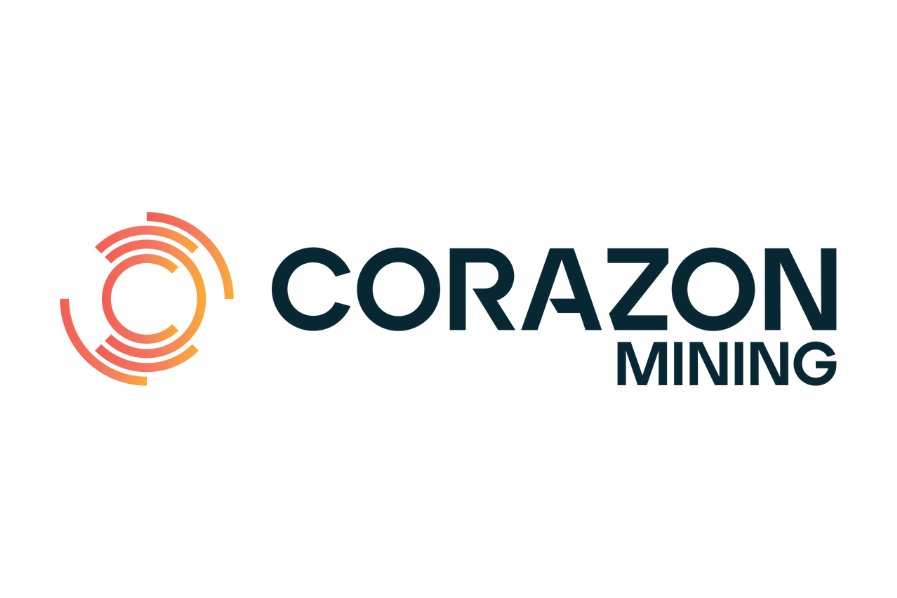 Corazon Mining (CZN:AU) has announced Completes Two Pools Gold acquisition
Corazon Mining (CZN:AU) has announced Completes Two Pools Gold acquisition
Download the PDF here.

 Corazon Mining (CZN:AU) has announced Completes Two Pools Gold acquisition
Corazon Mining (CZN:AU) has announced Completes Two Pools Gold acquisition
Download the PDF here.
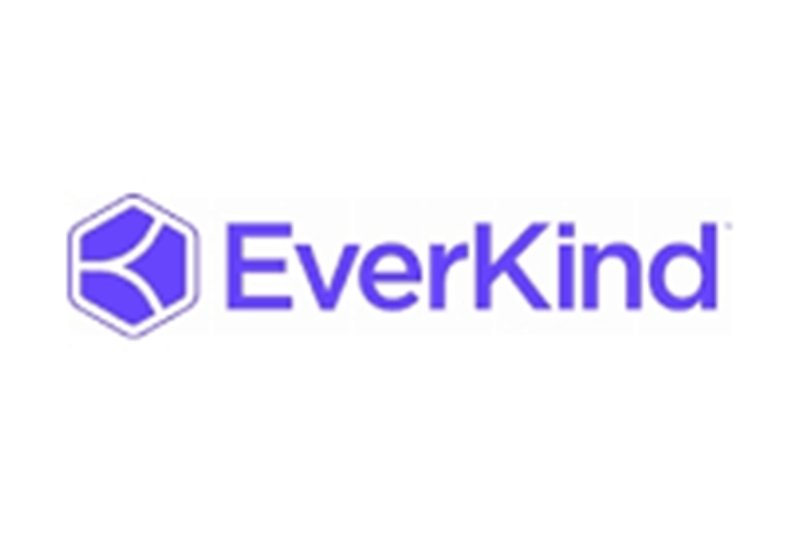
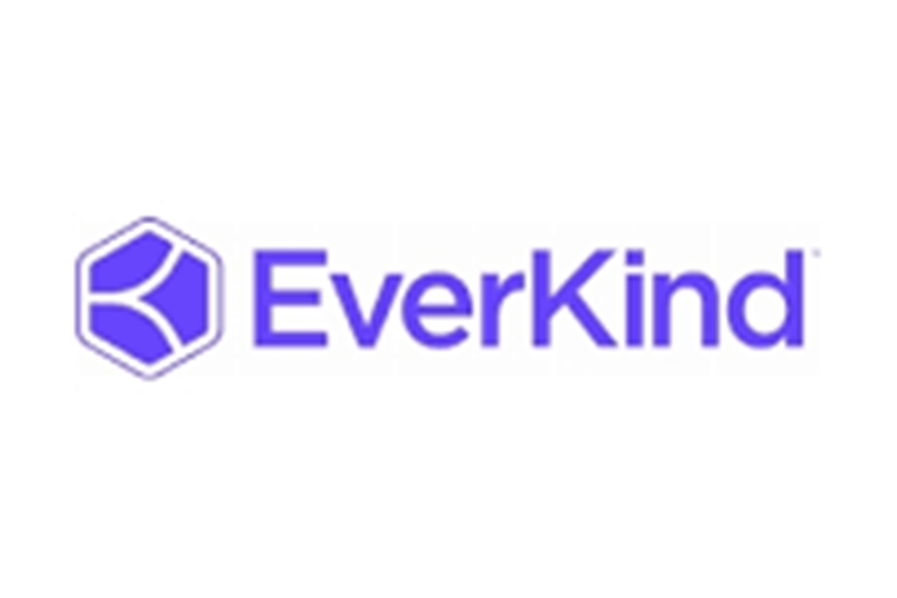
AF2 Capital Corp. (TSXV: AF.P) (‘AF2‘ or the ‘Company‘) is pleased to announce it has entered into a non-binding letter of intent dated October 14, 2025 (the ‘LOI‘) with EverKind Inc. (‘EverKind‘), an AI-powered emotional wellness platform, which sets forth, in general terms, the basic terms and conditions upon which EverKind and AF2 will combine their business operations resulting in a reverse takeover of AF2 by EverKind and its shareholders (the ‘Transaction‘). It is intended that the Transaction will constitute the ‘Qualifying Transaction’ of AF2 as such term is defined in Exchange Policy 2.4 – Capital Pool Companies, resulting in the combination of EverKind and AF2, with the common shares of the resulting issuer to the Transaction (the ‘Resulting Issuer Shares‘) being listed on the TSX Venture Exchange (the ‘Exchange‘), subject to approval of the Exchange.
EverKind is an AI-powered emotional wellness platform that helps users navigate mental and emotional challenges through intelligent, accessible tools. By combining cutting-edge AI with evidence-based wellness practices, EverKind supports users in building balance, clarity, and personal growth.
Pursuant to the terms of the LOI, it is intended that AF2 and EverKind will enter into a business combination by way of an arrangement, amalgamation, share exchange or other similar structure. The final structure of the business combination is subject to receipt by the parties of tax, corporate, and securities law advice. The acceptance of the LOI is being followed by good faith negotiations of definitive documentation, including a definitive merger, amalgamation or share exchange agreement (the ‘Definitive Agreement‘) among the parties setting forth the detailed terms of the Transaction, including the basic understandings set out in the LOI and such other terms and conditions as are customary for transactions of similar nature and magnitude to the Transaction.
AF2 is a capital pool corporation (a ‘CPC‘) as defined under the policies of the Exchange, and it is expected that an application for the listing of the Resulting Issuer Shares will be submitted to the Exchange following the execution of the Definitive Agreement. Completion of the Transaction is subject to a number of conditions, including but not limited to, receiving all required shareholder, regulatory, and other approvals. The Transaction is considered a related party transaction under Multilateral Instrument 61-101 – Protection of Minority Security Holders in Special Transactions and will be subject to majority of the minority shareholder approval. There can be no certainty that the Transaction will be completed on the terms set out in the LOI or at all.
A comprehensive news release will be issued by AF2 in due course disclosing details of the Transaction, including financial information with respect to EverKind, the names and backgrounds of all persons who will constitute insiders of the Resulting Issuer, the issued and outstanding securities of each of AF2 and EverKind, the terms of the exchange of securities of AF2 and EverKind, the applicable security exchange ratios, the details of any meetings of the shareholders of AF2 and EverKind required to approve the Transaction and matters related thereto (as applicable), and other material information respecting the Transaction once a Definitive Agreement has been executed and certain conditions have been met, including satisfactory completion of due diligence.
About AF2
AF2 is a CPC within the meaning of the policies of the Exchange that has not commenced commercial operations and has no assets other than cash. The officers of the Company are Michael Galloro, Chief Executive Officer, and Jonathan Held, Chief Financial Officer and Corporate Secretary. Except as specifically contemplated in the Exchange’s CPC policy, until the completion of its Qualifying Transaction, the Company will not carry on business, other than the identification and evaluation of companies, business or assets with a view to completing a proposed Qualifying Transaction.
About EverKind
EverKind is an AI-powered emotional wellness platform to support reflective, wellness-curious individuals. EverKind helps users navigate mental and emotional challenges through intelligent, accessible tools that meet them where they are, combining cutting-edge AI technology with evidence-based wellness practices to help achieve balance, clarity, and personal growth.
For further information:
AF2 – Michael Galloro, mgalloro@aloefinance.com
EverKind – Harrison Newlands, hello@everkind.com
Forward-Looking Statements
This press release contains ‘forward-looking information’ within the meaning of applicable Canadian securities legislation. Generally, forward-looking information can be identified by the use of forward-looking terminology such as ‘plans’, ‘expects’ or ‘does not expect’, ‘is expected’, ‘budget’, ‘scheduled’, ‘estimates’, ‘forecasts’, ‘intends’, ‘anticipates’ or ‘does not anticipate’, or ‘believes’, or variations (including negative and grammatical variations) of such words and phrases or state that certain acts, events or results ‘may’, ‘could’, ‘would’, ‘might’ or ‘will be taken’, ‘occur’ or ‘be achieved’.
Forward-looking information in this press release may include, without limitation, statements relating to: the completion of the Transaction and the timing thereof, the execution of the Definitive Agreement, the proposed business of the Resulting Issuer, shareholder and regulatory approvals, and future press releases and disclosure.
These statements are based upon assumptions that are subject to significant risks and uncertainties, including risks regarding general economic and industry factors, market conditions, management’s ability to manage and to operate the EverKind business, and the equity markets generally. Because of these risks and uncertainties and as a result of a variety of factors, the actual results, expectations, achievements or performance of each of the Resulting Issuer, the Company, or EverKind may differ materially from those anticipated and indicated by these forward-looking statements. Any number of factors could cause actual results to differ materially from these forward-looking statements as well as future results. Although the Company believes that the expectations reflected in forward-looking statements are reasonable, they can give no assurances that the expectations of any forward-looking statements will prove to be correct. Except as required by law, the Company disclaims any intention and assumes no obligation to update or revise any forward-looking statements to reflect actual results, whether as a result of new information, future events, changes in assumptions, changes in factors affecting such forward-looking statements or otherwise.
Neither the Exchange nor its Regulation Services Provider (as that term is defined in the policies of the Exchange) accepts responsibility for the adequacy or accuracy of this release.
Source
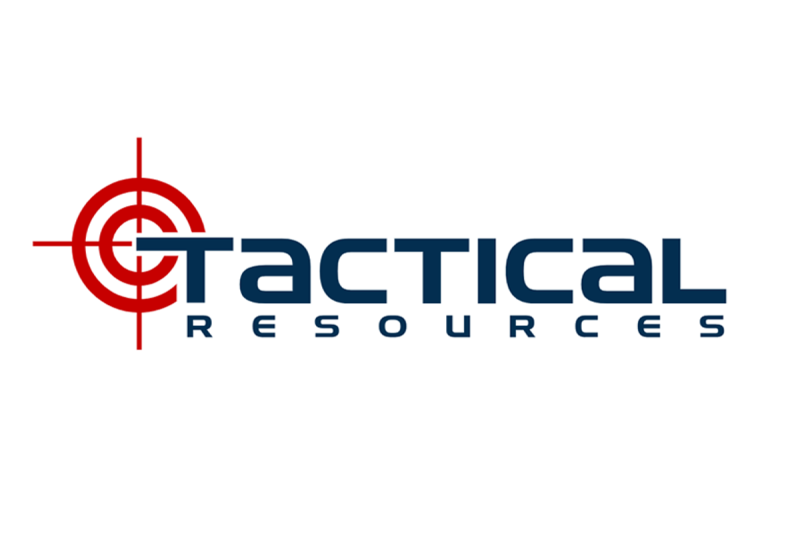
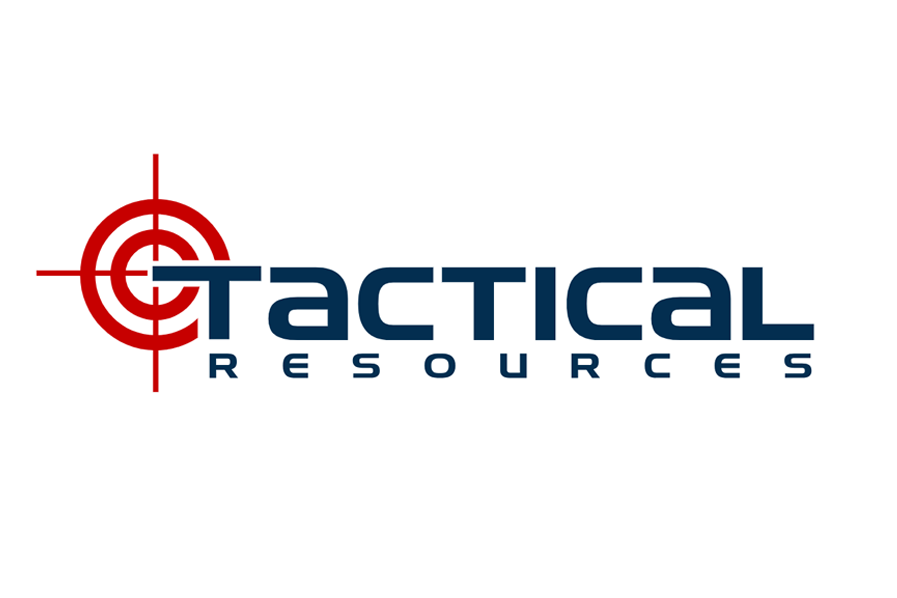
Tactical Resources Corp (TSXV:RARE)(OTC PINK:USREF) (“Tactical Resources” or the “Company”), a mineral exploration and development company, today announced a business update.
Nasdaq Transaction and U.S. Government Relations Progress
Tactical Resources continues to make progress with key project activities and is working to close its previously announced business combination with Plum Acquisition Corp. III (“Plum”), with several key milestones achieved:
“Our project work continues to demonstrate the promising potential of our direct-to-leach extraction process, positioning us uniquely in the rare earth elements sector,” said Ranjeet Sundher, CEO and Director of Tactical Resources. “We are actively engaging with key industry players regarding initial potential offtake discussions, which represents a significant step forward in our go-to-market strategy. Additionally, we have engaged experienced policy advisors to enhance our efforts in Washington D.C., ensuring we remain aligned with U.S. national critical minerals initiatives and defense priorities.”
Additional information may be found in the updated Tactical Resources Corporate Presentation. To sign up for Tactical Resources News Alerts, visit our Website (www.tacticalresources.com).
Market Dynamics
Policy + geopolitics
China tightened rare-earth export controls on Oct 9, 2025, expanding licensing and targeting defense and semiconductor end-uses-escalating supply-security risk for non-Chinese buyers.
U.S. federal support increased materially in 2025. In July 2025, the U.S. Department of Defense (DoD) announced a multi-billion-dollar public-private partnership with MP Materials to accelerate domestic magnet independence; contemporaneous reporting noted price floors for key REEs and a new large-scale magnet factory plan.
The Administration also pursued broader critical-minerals trade/security actions in 2025 (e.g., Section 232-related measures) and reiterated DPA use to expand domestic mineral capacity.
Market indicators
The VanEck Rare Earth & Strategic Metals ETF (REMX)-a liquid proxy for REE equities tracking the MVIS Global Rare Earth/Strategic Metals Index (MVREMXTR)-was +85.76% YTD as of Oct 8, 2025 (AUM ~$1.11B).
Supply-demand snapshots
Strategic context: Recent nonpartisan analysis (Oct 2025) emphasize that the U.S. remains behind on critical minerals/REE resilience and must couple onshoring with allied supply-chain strategies-consistent with the federal actions above.
Implications for Tactical Resources (sector-level)
China control tightening on REE export control, plus a more interventionist U.S. policy environment (price floors, DoD partnerships, DPA/Section 232 activity) tends to raise the option value of near-term, domestic, lower-capex feedstock-to-leach pathways and recycling/tailings-based REE projects-particularly those aligned with defense-relevant magnet materials and capable of accelerating time-to-first-production.
Path Forward
Currently, in addition to advancing the transaction with Plum, Tactical Resources continues to conduct ongoing project work to further analyze the potential of the Peak Project’s rare earth output and refine its growth strategy. Following the anticipated transaction closing, Tactical Resources plans to:
This press release has been authorized for issue by Director and CEO of Tactical Resources, Ranjeet Sundher.
About Tactical Resources
Tactical Resources is a mineral exploration and development company focused on U.S.-made rare earth elements used in semiconductors, electric vehicles, advanced robotics, and most importantly, national defense. The Company is also actively involved in the development of innovative metallurgical processing techniques to further unlock REE’s development potential.
Ranjeet Sundher, Chief Executive Officer
Tel: +1-778-588-5483
For additional information, please visit www.tacticalresources.com.
About Plum Acquisition Corp. III
Plum Acquisition Corp. III is a special purpose acquisition company, which engages in effecting a merger, capital stock exchange, asset acquisition, stock purchase, reorganization or similar business combination with one or more businesses. Plum Partners seeks to establish itself as the first-stop SPAC platform for high-quality companies, and the management team’s decades of operational experience leading technology companies, and Plum Partner’s proprietary Accelerating Through the Bell operational playbook, helps companies list and grow in the public markets.
For additional information, please visit https://plumpartners.com/.
The TSX Venture Exchange Inc. has in no way passed upon the merits of the proposed Business Combination and has neither approved nor disapproved the contents of this press release. Neither the TSX Venture Exchange nor its Regulation Services Provider (as that term is defined in the policies of the TSX Venture Exchange) accepts responsibility for the adequacy or accuracy of this release.
Forward Looking Statements
Certain statements included in this press release are not historical facts but are forward-looking statements for purposes of the safe harbor provisions under the United States Private Securities Litigation Reform Act of 1995. All statements other than statements of historical facts contained in this press release are forward-looking statements. Any statements that refer to projections, forecasts or other characterizations of future events or circumstances, including any underlying assumptions, are also forward-looking statements. In some cases, you can identify forward-looking statements by words such as “estimate,” “plan,” “project,” “forecast,” “intend,” “expect,” “anticipate,” “believe,” “seek,” “strategy,” “future,” “opportunity,” “may,” “target,” “should,” “will,” “would,” “will be,” “will continue,” “will likely result,” “preliminary,” or similar expressions that predict or indicate future events or trends or that are not statements of historical matters, but the absence of these words does not mean that a statement is not forward-looking. Forward-looking statements include, without limitation, Plum’s, Tactical Resources’, or their respective management teams’ expectations concerning the outlook for their or Tactical Resources’ business, productivity, plans, and goals for future operational improvements and capital investments, operational performance, future market conditions, or economic performance and developments in the capital and credit markets and expected future financial performance, including expected net proceeds, expected additional funding, the support of key stakeholders in the U.S. government, the percentage of redemptions of Plum’s public stockholders, growth prospects and outlook of Tactical Resources’ operations, individually or in the aggregate, including the achievement of project milestones, commencement and completion of commercial operations of certain of Tactical Resources’ projects, as well as any information concerning possible or assumed future results of operations of Tactical Resources. Forward-looking statements also include statements regarding the expected benefits of the Business Combination. The forward-looking statements are based on the current expectations of the respective management teams of Tactical Resources and Plum, as applicable, and are inherently subject to uncertainties and changes in circumstance and their potential effects. There can be no assurance that future developments will be those that have been anticipated. These forward-looking statements involve a number of risks, uncertainties or other assumptions that may cause actual results or performance to be materially different from those expressed or implied by these forward-looking statements. These risks and uncertainties include, but are not limited to, (i) the risk that the Business Combination may not be completed in a timely manner or at all, which may adversely affect the price of Plum’s securities; (ii) the risk that the Business Combination may not be completed by Plum’s business combination deadline and the potential failure to obtain an extension of the business combination deadline if sought by Plum; (iii) the failure to satisfy the conditions to the consummation of the Business Combination, including the adoption of the Business Combination Agreement by the shareholders of Plum and Tactical Resources and the receipt of certain regulatory and court approvals; (iv) market risks; (v) the occurrence of any event, change or other circumstance that could give rise to the termination of the Business Combination Agreement; (vi) the effect of the announcement or pendency of the Business Combination on Tactical Resources’ business relationships, performance, and business generally; (vii) risks that the Business Combination disrupts current plans of Tactical Resources and potential difficulties in its employee retention as a result of the Business Combination; (viii) the outcome of any legal proceedings that may be instituted against Tactical Resources or Plum related to the Business Combination Agreement or the Business Combination; (ix) failure to realize the anticipated benefits of the Business Combination; (x) the inability to meet listing requirements to list Plum III Merger Corp.’s (“Pubco”) securities on Nasdaq; (xi) the risk that the price of Pubco’s securities may be volatile due to a variety of factors, including changes in the highly competitive industries in which Tactical Resources plans to operate, variations in performance across competitors, changes in laws, regulations, technologies, natural disasters or health epidemics/pandemics, national security tensions, and macro-economic and social environments affecting its business, and changes in the combined capital structure; (xii) the inability to implement business plans, forecasts, and other expectations after the completion of the Business Combination, identify and realize additional opportunities, and manage its growth and expanding operations; (xiii) the risk that Tactical Resources may not be able to successfully develop its mining projects, and/or its expansion plan (xiv) the risk that Tactical Resources will be unable to raise additional capital to execute its business plan, which many not be available on acceptable terms or at all; (xv) political and social risks of operating in the U.S. and other countries; (xvi) the operational hazards and risks that Tactical Resources faces; and (xvii) the risk that additional financing in connection with the Business Combination may not be raised on favorable terms, or at all. The foregoing list is not exhaustive, and there may be additional risks that neither Plum nor Tactical Resources presently knows or that Plum and Tactical Resources currently believe are immaterial. You should carefully consider the foregoing factors, any other factors discussed in this press release and the other risks and uncertainties described in the “Risk Factors” section of Plum’s Annual Report on Form 10-K for the year ended December 31, 2024, which was filed with the SEC on March 28, 2025, the risks described in the Registration Statement on Form F-4 and the amendments thereto (the “Registration Statement”), which was initially filed by Pubco on October 29, 2024 and includes a preliminary proxy statement/prospectus, and those discussed and identified in filings made with the SEC by Plum and Pubco and filings made by Tactical Resources with the Canadian Securities Administrators (the “CSA”) from time to time. Tactical Resources and Plum caution you against placing undue reliance on forward-looking statements, which reflect current beliefs and are based on information currently available as of the date a forward-looking statement is made. Forward-looking statements set forth in this press release speak only as of the date of this press release. None of Tactical Resources, Plum, or Pubco undertakes any obligation to revise forward-looking statements to reflect future events, changes in circumstances, or changes in beliefs. In the event that any forward-looking statement is updated, no inference should be made that Tactical Resources, Plum, or Pubco will make additional updates with respect to that statement, related matters, or any other forward-looking statements. Any corrections or revisions and other important assumptions and factors that could cause actual results to differ materially from forward-looking statements, including discussions of significant risk factors, may appear, up to the consummation of the Business Combination, in Plum’s or Pubco’s public filings with the SEC, or Tactical Resources’ filings with the CSA, which are or will be (as appropriate) accessible at www.sec.gov or on SEDAR+ at www.sedarplus.ca , and which you are advised to review carefully.
Important Information for Investors and Shareholders
In connection with the Business Combination, Pubco and the Company have filed the Registration Statement with the SEC, which includes a prospectus with respect to Pubco’s securities to be issued in connection with the Business Combination and a proxy statement to be distributed to holders of Plum’s common shares in connection with Plum’s solicitation of proxies for the vote by Plum’s shareholders with respect to the Business Combination and other matters to be described in the Registration Statement (the “Proxy Statement”). After the SEC declares the Registration Statement effective, Plum plans to file a definitive Proxy Statement and prospectus with the SEC and to mail copies to stockholders of Plum as of a record date to be established for voting on the Business Combination. In addition, the Company will prepare and mail an information circular relating to the Business Combination to its shareholders. This press release does not contain all the information that should be considered concerning the Business Combination and is not a substitute for the Registration Statement, Proxy Statement or for any other document that Pubco or Plum may file with the SEC or that Tactical Resources may file with the CSA. Before making any investment or voting decision, investors and security holders of Plum and Tactical Resources are urged to read the Registration Statement and the Proxy Statement, and any amendments or supplements thereto, as well as all other relevant materials filed or that will be filed with the SEC or CSA in connection with the Business Combination as they become available because they will contain important information about Tactical Resources, Plum, Pubco and the Business Combination.
Investors and security holders will be able to obtain free copies of the Registration Statement, the Proxy Statement and all other relevant documents filed or that will be filed with the SEC by Pubco and Plum through the website maintained by the SEC at www.sec.gov and with the CSA through SEDAR+ at www.sedarplus.ca. In addition, the documents filed by Pubco and Plum may be obtained free of charge from Plum’s website at https://plumpartners.com/ or by directing a request to Kanishka Roy, Chief Executive Officer, 2021 Fillmore St. #2089, San Francisco, California 94115; Tel: 929-529-7125. The information contained on, or that may be accessed through, the websites referenced in this press release is not incorporated by reference into, and is not a part of, this press release.
Participants in the Solicitation
Tactical Resources, Plum, Pubco and their respective directors, executive officers and other members of management and employees may, under the rules of the SEC or CSA, be deemed to be participants in the solicitations of proxies in connection with the Business Combination. For more information about the names, affiliations and interests of Plum’s directors and executive officers, please refer to Plum’s annual report on Form 10-K filed with the SEC on March 28, 2025, and Registration Statement, Proxy Statement and other relevant materials filed with the SEC in connection with the Business Combination when they become available. Information about the directors and executive officers of Tactical Resources can be found in its Management Information Circular dated October 26, 2023, which was filed with the CSA on November 11, 2023. Additional information regarding the participants in the proxy solicitation and a description of their direct and indirect interests, which may, in some cases, be different than those of Plum’s or Tactical Resource’s shareholders generally, are included in the Registration Statement and the Proxy Statement as filed with the SEC or the CSA and other relevant materials when they become available. Shareholders, potential investors and other interested persons should read the Registration Statement and the Proxy Statement and other such documents carefully before making any voting or investment decisions. You may obtain free copies of these documents from the sources indicated above.
No Offer or Solicitation
This release shall not constitute a “solicitation” as defined in Section 14 of the Securities Exchange Act of 1934, as amended. This release shall not constitute an offer to sell or exchange, the solicitation of an offer to buy or a recommendation to purchase, any securities, or a solicitation of any vote, consent or approval, nor shall there be any sale, issuance or transfer of securities in any jurisdiction in which such offer, solicitation or sale may be unlawful under the laws of such jurisdiction. No offering of securities in the Business Combination shall be made except by means of a prospectus meeting the requirements of the Securities Act of 1933, as amended, or an exemption therefrom.
Investor and Media Relations Contact
Media
media@tacticalresources.com
Investors
investors@tacticalresources.com
Source
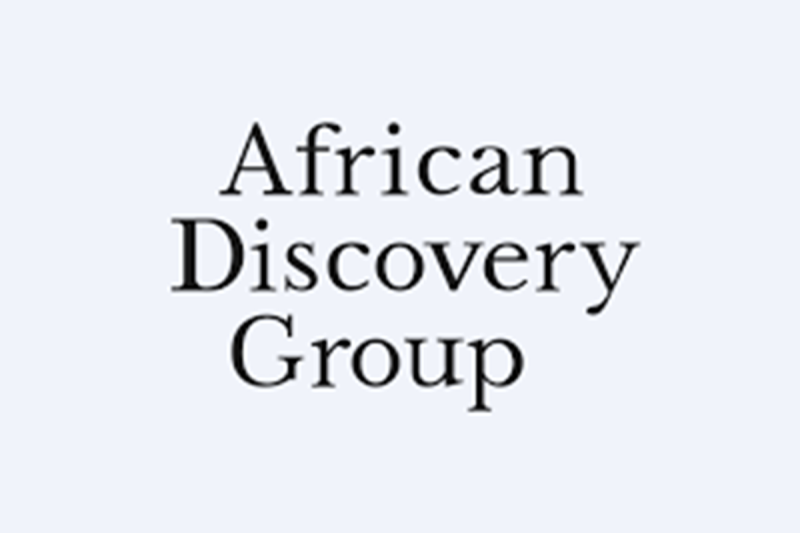
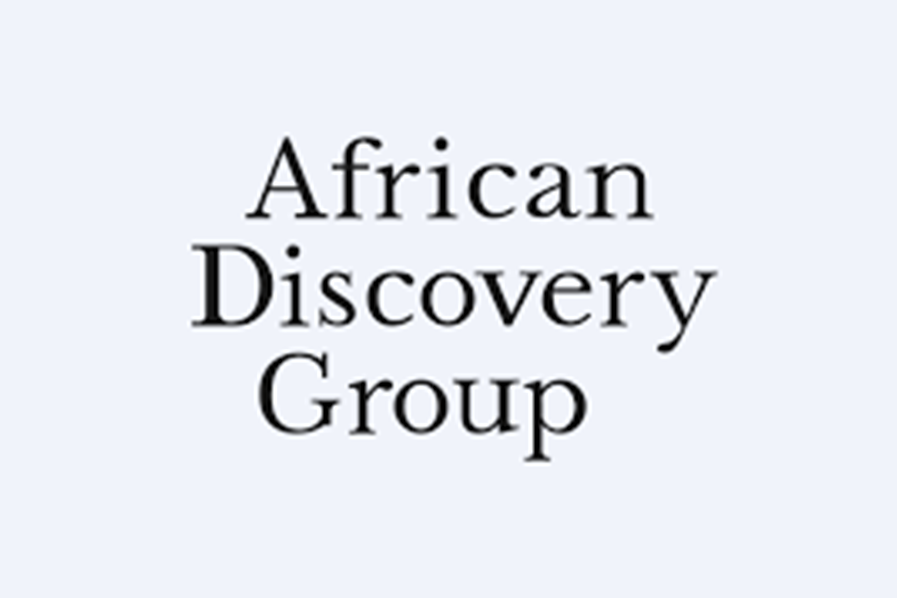
The Governments of the United States and the Democratic Republic of the Congo (DRC) co-hosted the U.S.–DRC Economic and Investment Forum in Washington, D.C. The two-day event convened senior officials from both governments, institutional investors, representatives of major development finance institutions, and executives from leading U.S. and Congolese companies to strengthen bilateral economic relations, expand trade and investment, and promote sustainable development. The event was hosted by Her Excellency, Judith Suminwa, who is the first woman prime minister of the DRC.
The Forum highlighted investment opportunities across key sectors including mining and critical minerals, energy, infrastructure, agriculture, manufacturing, technology, and environmental sustainability, aiming to foster public–private partnerships grounded in transparency, good governance, and environmental responsibility, while advancing reforms to improve the DRC’s business climate.
The Forum followed a successful U.S.–DRC investment roundtable hosted earlier in the year in Washington, D.C., by President Donald J. Trump and President Félix Tshisekedi, which underscored both nations’ commitment to building a strategic, investment-driven partnership. The meeting focused on advancing collaboration in the responsible sourcing and processing of critical minerals—such as cobalt, lithium, copper, and tantalum— essential to the global clean energy and technology sectors. U.S. Secretary of State Marco Rubio has previously emphasized the strategic importance of protecting U.S. interests in critical minerals and supporting peace and stability in the region, highlighting the role of responsible investment in fostering regional security and long-term growth.
President Trump has stated: ‘Our partnership with the Democratic Republic of the Congo provides the United States with a strategic advantage by securing critical minerals essential to our industries. U.S. companies are ready to step up and invest. For them to succeed, they need transparency, predictable governance, and a stronger enabling environment in the DRC.’ The Chairman and CEO of African Discovery Group, Alan Kessler stressed in his roundtable with the Governor of Lualaba, DRC, Fifi Masuka Saini, a focus on governance and bankability of underlying projects. This theme of corporate governance has been stated numerous times by Commerce Secretary Howard Lutnick, as a key to unlocking US investment. The DRC holds approximately $30 trillion of mineral wealth at current prices, while the United States holds approximately 55% of the world’s global institutional assets.
As part of this deepening bilateral cooperation, a major milestone was marked by African Discovery Group (AFDG) announcing a move to acquire the Butembo copper exploration license in the DRC as part of a strategic push to create a new dedicated American copper company, signaling growing investor confidence and the strengthening of bilateral economic ties.
The forum additionally acts as a backdrop to further tensions in US-China trade on strategic minerals and metals, with U.S. Trade Representative Jamieson Greer adding that China’s recent restrictions on minerals exports are prompting a ‘global supply chain power grab.’
CONTACT: mg@africandiscoverygroup.com
Source


Here’s a quick recap of the crypto landscape for Wednesday (October 15) as of 9:00 p.m. UTC.
Get the latest insights on Bitcoin, Ether and altcoins, along with a round-up of key cryptocurrency market news.
Bitcoin (BTC) was priced at US$112,274, a 1.2 percent decrease in 24 hours. Its lowest valuation of the day was US$110,392, and its highest was US$112,241.

Bitcoin price performance, October 15, 2025.
Chart via TradingView.
Analysts maintain that market resilience and institutional demand persist despite the largest liquidation event in the cryptocurrency’s history last week. In his weekly commentary, Bitwise Asset Management’s Matt Hougan notes that while panic is often signaled by a flood of investor communications, this time “it was crickets.”
He observed, “professional investors largely ignored the news,” despite media and social media buzz.
Hougan added that the market may remain jittery in the near term as liquidity providers typically pull back after major volatility, which can cause exaggerated price moves.
However, he expressed confidence that “over time, the market will catch its breath and renew its attention on crypto’s fundamentals,” leading him to believe “the bull market will continue apace.”
While fundamentals and ongoing institutional demand sustain optimism, the market stands at a critical point where a near-term correction remains a real possibility before the bull market can continue.
Technical analysts warn of downside risks, with a rising wedge pattern and a key support level at US$102,000. A breakdown could trigger a 34 percent correction to US$74,000.
Ether (ETH) was priced at US$3,983.03, a 3 percent decrease in 24 hours. Its lowest valuation of the day was US$3,944.17, and its highest was US$4,096.90. Analysts are bullish on Ether, with some projecting a potential rally to US$5,200, citing the Ethereum Foundation’s new privacy initiative as a critical catalyst.
The “Privacy Cluster,” a 47 person research and engineering team, aims to embed protocol-level privacy features, including private payments, decentralized identity and zero-knowledge infrastructure, directly into Ethereum’s architecture.
Bitcoin derivatives metrics indicate a cautious and consolidating market.
Liquidations have totaled approximately US$10.4 million in the last four hours, with long positions making up a slight majority, signaling continued risk aversion among traders. Ether liquidations showed a divergent pattern, totaling US$20.67 million, the overwhelming majority of which were long positions.
Futures open interest for Bitcoin has decreased by 0.09 percent to US$72.62 billion, and Ether futures open interest moved by +0.95 percent to US$46.64 billion, reflecting market consolidation and repositioning.
The perpetual funding rate for Bitcoin and Ether was 0.003, indicating a neutral to slightly bullish market sentiment.
Bitcoin’s RSI stood at 39.63, indicating that it is in a bearish or neutral momentum phase but not yet deeply oversold.
CMC’s Crypto Fear & Greed Index has dipped back into fear territory after shifting in between neutral for the past few weeks. The index currently stands around 37.

CMC Crypto Fear and Greed Index, Bitcoin price and Bitcoin volume.
Chart via CoinMarketCap.
Taiwanese fintech company OwlTing has received approval to list directly on the Nasdaq Global Market.
Operating under its parent entity, OBOOK Holdings, OwlTing will trade under the ticker symbol ‘OWLS,’ and will mark its first trading day on the Nasdaq by ringing the opening bell on Thursday (October 16).
This direct listing approach allows OwlTing to avoid issuing new shares, thereby preventing dilution of existing shareholders’ equity and signaling steadfast confidence in its valuation and growth strategy.
Founded by Darren Wang, OwlTing launched its flagship product, OwlPay, in 2023. OwlPay enables businesses globally to transact using stablecoins such as USDC or traditional fiat currencies. The company aims to leverage its Nasdaq listing to expand its global footprint while emphasizing financial transparency and regulatory compliance.
The US government is preparing to retain approximately 127,271 BTC, valued at US$14.2 billion, as part of the country’s newly established Strategic Bitcoin Reserve.
These assets were confiscated in a joint US-UK crypto fraud case tied to Chen Zhi of the Cambodia-based Prince Group.
Instead of selling the Bitcoin, authorities plan to hold it long term, with Executive Order 2025 mandating that crypto forfeited in criminal or civil cases be allocated to the reserve rather than auctioned. The coins are expected to complement ongoing institutional accumulation and exchange-traded fund (ETF) inflows, potentially strengthening broader market stability. Analysts note this move may bolster Bitcoin’s perception as a viable state-held asset.
Bitwise data indicates public companies significantly increased their Bitcoin exposure in the third quarter of the year, with the total holdings of corporate treasuries reaching US$117 billion.
In total, 172 firms now hold more than 1.02 million BTC, up nearly 40 percent from the prior quarter.
Michael Saylor’s Strategy (NASDAQ:MSTR) remains the largest holder with 640,031 BTC, while newer entrants like Metaplanet (TSE:3350,OTCQX:MTPLF) have more than doubled their positions. Analysts say the trend reflects a strategic pivot, with firms treating Bitcoin as both a hedge and a long-term treasury reserve.
Public companies led the accumulation, adding roughly 193,000 BTC, far outpacing private firms and ETFs.
The Bless token (BLESS) reached an all-time high of US$0.1652 on Wednesday, representing an increase of over 230 percent in 24 hours and about 390 percent from its earlier lower price of US$0.0234.
The surge was accompanied by an increase in trading volume, with 24 hour volume soaring to approximately US$101 million, bringing the market capitalization to over US$200 million. The rally has been attributed to several catalysts, including Binance Alpha listing speculation, the project roadmap featuring GPU-ready nodes and fiat on-ramps.
New York City Mayor Eric Adams established an Office of Digital Assets and Blockchain, appointing Moises Rendon as executive director. Adams, an early Bitcoin and Ether recipient of his mayoral salary, emphasized the potential for digital assets to expand opportunities for underbanked communities. The office aims to promote responsible innovation, coordinate municipal policy and position NYC as a global crypto hub.
Erebor, a financial services company backed by Peter Thiel, has received preliminary US regulatory approval to launch, potentially filling the void left by Silicon Valley Bank’s 2023 collapse.
While a banking charter has been secured, several compliance and security hurdles remain before operations can begin, a process that could take months. The Office of the Comptroller of the Currency confirmed the approval, with Comptroller Jonathan V. Gould stating that ‘permissible digital asset activities … have a place in the federal banking system if conducted in a safe and sound manner.’
Securities Disclosure: I, Giann Liguid, hold no direct investment interest in any company mentioned in this article.
Securities Disclosure: I, Meagen Seatter, hold no direct investment interest in any company mentioned in this article.


McEwen (TSX:MUX,NYSE:MUX) has agreed to acquire Canadian Gold (TSXV:CGC,OTCQB:STRRF) in an all-share transaction that values Canadian Gold at a 96.7 percent premium over its pre-announcement trading price.
The deal, announced on Tuesday (October 14) and finalized under a definitive arrangement agreement signed on October 10, will see McEwen acquire Canadian Gold through a statutory plan of arrangement.
Once completed, Canadian Gold will become a wholly owned subsidiary of McEwen, strengthening the miner’s Canadian project portfolio with a high-grade, former-producing mine in Manitoba.
Under the terms of the agreement, Canadian Gold shareholders will receive 0.0225 McEwen shares for each Canadian Gold share held. Upon completion, existing McEwen shareholders will own approximately 92 percent of the combined company, while Canadian Gold shareholders will hold about 8 percent.
McEwen will continue to trade under its existing ticker symbol, “MUX,” on both the NYSE and TSX.
Canadian Gold’s flagship asset is the Tartan Lake gold mine project, located near Flin Flon, Manitoba. The property is a past-producing, high-grade gold mine with established infrastructure and strong exploration potential.
The site is situated near an experienced mining workforce and requires no construction of a new camp, a logistical advantage that McEwen says aligns with its existing operational model.
The acquisition offers benefits for both sets of shareholders, according to the companies. For Canadian Gold investors, the transaction will provide access to McEwen’s diversified operations, technical expertise and the liquidity of a dual-listed stock. For McEwen shareholders, the deal adds another advanced-stage Canadian project with geological similarities to the company’s Fox complex in Ontario, bolstering its exploration and production pipeline.
“The Tartan Mine has significant potential and complements our development strategy,” Chairman and Chief Owner Rob McEwen said in a press release, noting possible synergies with Fox. The boards of both companies unanimously approved the deal following recommendations from independent special committees.
In compliance with NYSE rules, Rob McEwen will not receive newly issued McEwen shares representing over 1 percent of the company’s current shares without prior shareholder approval, which will be sought at the next annual meeting.
Should approval not be obtained, McEwen will pay cash in lieu of excess shares.
The deal includes customary closing conditions, regulatory approvals and a C$2.195 million break fee payable to McEwen if Canadian Gold accepts a superior proposal. A detailed information circular outlining the terms of the proposed transaction will be mailed to Canadian Gold shareholders ahead of a December special meeting.
Securities Disclosure: I, Giann Liguid, hold no direct investment interest in any company mentioned in this article.

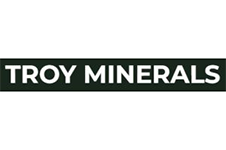
Troy Minerals Inc. (‘Troy’ or the ‘Company’) (CSE:TROY)(OTCQB:TROYF)(FSE:VJ3) is pleased to provide an update on exploration progress at its 100%-owned Table Mountain Silica Project (‘Table Mountain’ or the ‘Project’), located near Golden, British Columbia (Figure 1).
Channel Sampling Overview and Update
Among other exploration work, the 2025 program focused on systematic channel sampling across the main quartzite resource zone, where recent geological prospecting identified new exposures of Mount Wilson Formation quartzite.
A total of 47 samples were collected, primarily along two main channel lines at 1-metre intervals (truncated at outcrop edges) covering an area of approximately 2,500 square metres. Channels were oriented perpendicular to bedding to approximate true widths of the silica zones. Sampling locations were positioned to complement the 2024 and 2025 UAV LiDAR surveys and to guide upcoming resource definition and drilling planned for the 2026 field season. Figure 2 below illustrates the sample locations within the mapped quartzite unit.
All samples have been submitted to ALS Geochemistry in Kamloops for analysis. Analytical results for the samples are anticipated in the coming weeks.
‘The samples collected this season are designed to tie directly into the upcoming drill program,’ said Yannis Tsitos, President of Troy Minerals. ‘They expand coverage across the established resource area, providing the data we need to refine near-future drilling and metallurgical test work.’
In addition, UAV LiDAR survey data collected in September 2025 is currently being processed and will be used to finalize drill pad and access engineering, as applicable.
About the Table Mountain Project
The Table Mountain Silica Project is located approximately 4 kilometres east of Golden, B.C., Canada, with excellent year-round road access and proximity to the Canadian Pacific Railway’s Golden rail yard. The property covers roughly 2,526 hectares, encompassing up to 11 kilometres of regionally mapped strike length of the Mount Wilson Formation quartzite, with widths ranging from 300 to 1,400 metres at surface. Table Mountain is strategically situated near two established high-purity silica operations – the Moberly Silica Mine and the Sinova Quartz Quarry – both of which demonstrate silica purity greater than 99.6% SiO₂.(1)(2)* This advantageous location highlights the project’s potential to become a significant source of high-purity silica in a region known for hosting premium-quality silica deposits.
* Cautionary Note: The QP has been unable to verify the information and that the information is not necessarily indicative to the mineralization on the property that is the subject of the disclosure.
References
Qualified Person
Technical information in this release has been reviewed and approved by Case Lewis, P.Geo., a Qualified Person under NI 43-101 and a director of the property vendor.
About Troy Minerals
Troy Minerals is a Canadian based publicly listed mining company focused on building shareholder value through acquisition, exploration, and development of strategically located ‘critical’ mineral assets. Troy is aggressively advancing its projects within the silica (silicon), scandium, vanadium, and rare earths industries within regions that exhibit high and growing demand for such commodities, in both North America and Central-East Asia. The Company’s primary objective is the near-term prospect of production with a vision of becoming a cash-flowing mining company to deliver tangible monetary value to shareholders, state, and local communities.
ON BEHALF OF THE BOARD,
Rana Vig | President and Director Telephone: 604-218-4766
Email: rana@ranavig.com
Forward-Looking Statements
Statement Regarding Forward-Looking Information: This release includes certain statements that may be deemed ‘forward-looking statements’. All statements in this release, other than statements of historical facts, that address events or developments that Troy Resources Inc. (the ‘Company’) expects to occur, are forward-looking statements. Forward-looking statements are statements that are not historical facts and are generally, but not always, identified by the words ‘expects’, ‘plans’, ‘anticipates’, ‘believes’, ‘intends’, ‘estimates’, ‘projects’, ‘potential’ and similar expressions, or that events or conditions ‘will’, ‘would’, ‘may’, ‘could’ or ‘should’ occur. Although the Company believes the expectations expressed in such forward-looking statements are based on reasonable assumptions, such statements are not guarantees of future performance and actual results may differ materially from those in the forward-looking statements. Factors that could cause the actual results to differ materially from those in forward-looking statements include results of exploration activities may not show quality and quantity necessary for further exploration or future exploitation of minerals deposits, volatility of commodity prices, and continued availability of capital and financing, permitting and other approvals, and general economic, market or business conditions. Investors are cautioned that any such statements are not guarantees of future performance and actual results or developments may differ materially from those projected in the forward-looking statements. Forward-looking statements are based on the beliefs, estimates and opinions of the Company’s management on the date the statements are made. Except as required by applicable securities laws, the Company undertakes no obligation to update these forward-looking statements in the event that management’s beliefs, estimates or opinions, or other factors, should change.
The Canadian Securities Exchange has not reviewed this press release and does not accept responsibility for the adequacy or accuracy of this news release.
Source
Click here to connect with Troy Minerals Inc. (CSE:TROY)(OTCQB:TROYF)(FSE:VJ3) to receive an Investor Presentation
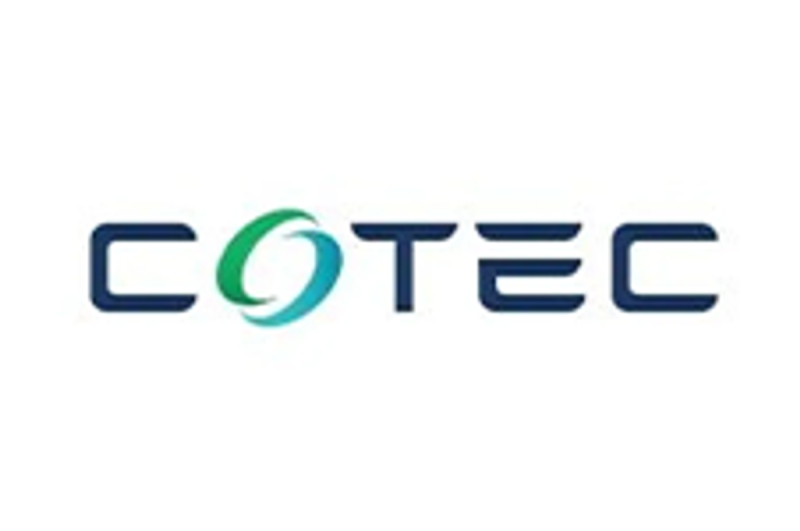
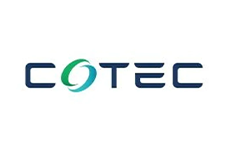
CoTec Holdings Corp. (TSXV:CTH)(OTCQB:CTHCF) (‘CoTec’ or the ‘Company’) is pleased to announce Québec-based BBA Inc. (‘BBA’) has been engaged to complete the Lac Jeannine Iron Tailings Project (‘Lac Jeannine’ or the ‘Project’) bankable Feasibility Study (the ‘FS’) to engineer and design its Iron Tailings reclamation Project in Québec, Canada.
Julian Treger, CoTec CEO commented: ‘Lac Jeannine exemplifies CoTec’s strategy to deploy innovative, environmentally responsible technologies which transform legacy waste sites into valuable resources. The Project has the potential to deliver strong economic returns while simultaneously addressing historical environmental liabilities. Furthermore, the inclusion of adjacent tailings in the Project has the potential to almost double the life of mine with limited additional capex, unlocking substantial upside potential.
We are very excited to be working with BBA to complete the Feasibility Study and to position Lac Jeannine as a model for sustainable tailings redevelopment in Québec. During the Feasibility Study, discussions with strategic partners will be accelerated so the Project has the full support of all stakeholders, including the Government of Québec, First Nations and other interested parties. The results from the 2025 drilling and bulk sample, which are expected in Q1 2026, could also allow CoTec to increase its current resource estimate for Lac Jeannine.’
Lac Jeannine represents CoTec’s first stand-alone tailings reprocessing investment complementing the Company’s strategy to apply advanced technologies to unlock value from underutilized resource assets. The study will build on the positive results of the 2024 Preliminary Economic Assessment (‘PEA’) announced on June 27, 2024i, which was based on only part of the total tailings and outlined a pre-tax NPV of US$93.6 million and an IRR of 38%, based on an initial capital investment of US$64.6 million. The Feasibility Study will include the application of the Salter Cyclone Multi-Gravity Separators (‘MGS’) technology for the recovery of additional iron ore from the Project.
The Feasibility Study is expected to be completed through a staged approach by H2 2026. Lac Jeannine has the potential to produce high grade, critical mineral, iron ore concentrate at competitive cost structures which can deliver high purity iron concentrates for the green steel industry. The Lac Jeannine Project offers great potential for the resource industry to recover the economic benefit of large Fe tailing sites.
In September 2025, CoTec completed an infill and extension drilling campaign with the goal of upgrading to Indicated the existing Inferred Mineral Resource of 73 million tonnes at 6.7% total Fe, for 4.9 Mt of contained total Fe, and extending the Project to include a large part of the adjacent tailings not included in the PEA (‘Adjacent Tailings’). The inclusion of the Adjacent Tailings has the potential to almost double the life of mine with limited additional capex, unlocking substantial upside potential. The Feasibility Study metallurgy testing will target the production of direct-reduction (‘DR’) grade concentrate by the Project.
About Lac Jeannine
The Lac Jeannine Property comprises 31 mineral claims (exclusive exploration rights) covering 1,649 hectares in Québec’s Côte-Nord Region, approximately eight kilometres southeast of Gagnon and 290 kilometres north of Baie-Comeau. The Project encompasses the historic Lac Jeannine open-pit iron mine, which produced approximately 260 million long tons of ore averaging 33% Fe between 1961 and 1976.
The site includes a large Tailings Storage Facility (TSF) where concentrator tailings were deposited prior to mine closure and reclamation in 1984. CoTec’s focus is on reprocessing these tailings for residual iron recovery while rehabilitating the TSF.
The Independent Qualified Person as defined by NI 43-101 for the Lac Jeannine Mineral Resource, Mr. Christian Beaulieu, P.Geo., is a member of l’Ordre des géologues du Québec (#1072). The Qualified Person has reviewed and approved the scientific and technical content of this announcement relating to the Lac Jeannine Mineral Resource
About CoTec Holdings Corp.
CoTec Holdings Corp. (TSX-V:CTH)(OTCQB:CTHCF) is redefining the future of resource extraction and recycling. Focused on rare earth magnets and strategic materials, CoTec integrates breakthrough technologies with strategic assets to unlock secure, sustainable, and low-cost supply chains.
CoTec’s mission is clear: accelerate the energy transition while strengthening strategic critical mineral supply chains for the countries we operate in. By investing in and deploying disruptive technologies, the Company delivers capital-efficient, scalable solutions that transform marginal assets, tailings, waste streams, and recycled products into high-value critical minerals.
From its HyProMag USA magnet recycling joint venture in Texas, to iron tailings reprocessing in Québec, to next-generation copper and iron solutions backed by global majors, CoTec is building a diversified portfolio with long-term growth, rapid cash flow potential, and high barriers to entry. The result is a game-changing platform at the intersection of technology, sustainability, and strategic materials.
For more information, please visit www.cotec.ca.
For further information, please contact:
Braam Jonker – (604) 992-5600
Forward-Looking Information Cautionary Statement
Statements in this press release regarding the Company and its investments which are not historical facts are ‘forward-looking statements’ which involve risks and uncertainties, including statements relating to the timing, scope, and completion of the Feasibility Study, the potential future value of the Project, the maiden resource estimate, the bulk sample extraction, the option exercise, and the Project, as well as management’s expectations with respect to the Lac Jeannine investment and other current and potential future investments, and the benefits to the Company which may be implied from such statements.
Since forward-looking statements address future events and conditions, by their very nature, they involve inherent risks and uncertainties. Actual results in each case could differ materially from those currently anticipated in such statements due to known and unknown risks and uncertainties affecting the Company, including but not limited to: resource and reserve risks; environmental risks and costs; permitting and regulatory risks; labor costs and shortages; uncertain supply and price fluctuations in materials; increases in energy costs; labor disputes and work stoppages; equipment leasing and availability; heavy equipment demand and availability; contractor and subcontractor performance; worksite safety issues; project delays and cost overruns; extreme weather events; and social, transport, or geopolitical disruptions.
For further details regarding risks and uncertainties facing the Company, please refer to ‘Risk Factors’ in the Company’s filing statement dated April 6, 2022, a copy of which may be found under the Company’s profile on SEDAR+ (www.sedarplus.ca). The Company assumes no obligation to update forward-looking statements in this press release except as required by law. Readers should not place undue reliance on the forward-looking statements and information contained in this news release and are encouraged to read the Company’s continuous disclosure documents available on SEDAR+ (www.sedarplus.ca).
Neither the TSX Venture Exchange nor its Regulation Services Provider (as that term is defined in the policies of the TSX Venture Exchange) accepts responsibility for the adequacy or accuracy of this news release.
i For further details, please refer to the technical report entitled ‘Mineral Resource Estimate, Preliminary Economic Assessment and NI 43-101 technical report for CoTec’s Lac Jeannine Fe Tailings Project, Québec, Canada’ dated August 5, 2024 and having an effective date of March 19, 2024 prepared by Addison Mining Services Ltd., JPL GeoServices Inc., Soutex Inc., Amerston Consulting Ltd. and Axe Valley Mining Consultants Ltd. A copy of the technical report is available under CoTec’s profile on SEDAR+ (www.sedarplus.com) and the Company’s website
Source
Click here to connect with CoTec Holdings Corp. (TSXV:CTH)(OTCQB:CTHCF) to receive an Investor Presentation


Standard Uranium Ltd. (TSXV: STND,OTC:STTDF) (OTCQB: STTDF) (FSE: FWB:9SU0) (‘Standard Uranium’ or the ‘Company’) is pleased to announce preliminary results from its 2025 exploration program at the Rocas Uranium Project (‘Rocas’, or the ‘Project’), currently under a three-year earn-in option agreement with Collective Metals Inc. (‘Collective Metals’) (CSE: COMT). From September 30th to October 8th, 2025, the Company completed a detailed mapping and sampling program across historical uranium showings and zones of interest on the Project, identifying multiple zones of strong radioactivity.
Highlights:
Strong Radioactivity at Surface – Verification of strong radioactivity at multiple historical uranium showings, with several handheld scintillometer measurements exceeding 10,000 counts per second (‘cps’) at surface.
Discovery of New Radioactive Showings – Scintillometer prospecting identified previously undocumented radioactive anomalies across the Project area within lithologies favorable for uranium and Rare Earth Element (‘REE’) mineralization.
Prime Location – Geological mapping along structural and electromagnetic (‘EM’) trends across the Project confirmed the presence of deformed and hydrothermally altered basement lithologies along more than 7.5 km of exploration strike length south of Key Lake.
New Uranium Targets – Results from a high-resolution ground gravity survey completed in 2024 highlight potential alteration halos and high-priority exploration targets along well-defined structural corridors. A diamond drill program is planned for 2026 to test targets identified and prioritized through detailed exploration activities carried out this year.
‘The confirmation of strong radioactivity at the Rocas Project is an exciting step forward, directly validating historical uranium showings and highlighting the Project’s discovery potential,’ said Sean Hillacre, President & VP Exploration of Standard Uranium. ‘Surface grab samples and technical information collected during this program not only strengthen our geological model but also add real value ahead of a maiden drill program planned for next year.’

Figure 1. Regional map of Standard Uranium’s Rocas Project. The Project is located 75 kilometres southwest of the Key Lake Mine and Mill facilities along Highway 914.
To view an enhanced version of this graphic, please visit:
https://images.newsfilecorp.com/files/10633/270619_0d251aeee4aeba99_001full.jpg
2025 Prospecting Program – Preliminary Results
The Rocas project comprises 4,002 hectares, located 75 kilometers southwest of the Key Lake Mine and Mill facilities along Highway 914, and approximately 72 kilometers south of the present-day margin of the Athabasca Basin (Figure 1). Beginning September 30th and concluding October 8th, 2025, the Standard Uranium technical team completed a detailed mapping, prospecting, and sampling program to ground-truth historical uranium showings at surface on the Project.
A total of 16 outcrop and boulder grab samples have been submitted to Saskatchewan Research Council Geoanalytical Laboratories in Saskatoon, SK for whole-rock, uranium, and REE geochemical analysis.
Prospecting confirmed several uraniferous outcrops and boulders across the Project, including SMDI showing 5781 (1,100 ppm U)1. Anomalous* radioactivity with a peak of >33,000 cps was measured at SMDI showing 5781 (Figure 2) with several other instances of elevated radiometry were noted, locally up to 26,000 cps.
A total of 73 handheld scintillometer readings of anomalous radioactivity >300 cps were recorded, including 10 measurements >10,000 cps at surface (Figure 3). Prospecting for radioactive boulders and outcrop was completed using handheld RS-120 Super-Scintillometers and RS-125 Super-Spectrometers manufactured by Radiation Solutions Inc. (‘RSI’).
More than 150 detailed geological observations, structural measurements, and scintillometer readings were taken from several outcrops across the Project within the target areas, identifying deformed and hydrothermally altered basement lithologies associated with radioactivity (Figure 4).

Figure 2. Investigation at SMDI showing 5781 returned strong radioactivity across an area of 35 m. Scintillometer readings ranging from: A) 26,900 cps, B) 25,400 cps, and C) 33,000 cps.
To view an enhanced version of this graphic, please visit:
https://images.newsfilecorp.com/files/10633/270619_0d251aeee4aeba99_002full.jpg

Figure 3. Newly discovered quartz-rich pegmatitic orthogneiss outcrop reaching upwards of 28,200 cps along the northern conductor trend. Outcrop was partially under soil cover.
To view an enhanced version of this graphic, please visit:
https://images.newsfilecorp.com/files/10633/270619_0d251aeee4aeba99_003full.jpg

Figure 4. Oxidized metasediment outcrop with hematite and limonite alteration
To view an enhanced version of this graphic, please visit:
https://images.newsfilecorp.com/files/10633/270619_0d251aeee4aeba99_004full.jpg
Rocas Project Exploration
The Company plans to complete the first ever drill program on the Project in 2026 to begin testing high-priority zones along the main 7.5 kilometre magnetic low/EM conductive corridor, which is host to several uranium showings and has remained un-drill tested to date.
Earlier this year, the Company contracted MWH Geo-Surveys (Canada) Ltd. to carry out a high-resolution ground gravity survey over the Rocas Project2, while Convolutions Geoscience Corporation has completed subsequent processing, interpretation, and modelling of the gravity data. The ground gravity survey outlines several gravity low anomalies coincident with historical surface mineralization, lakebed geochemical anomalies, and cross-cutting fault zones along the known conductive exploration trends on the Project.
Historical airborne EM work in 2017 defined conductive trends on the Project west of and sub-parallel to the Key Lake Road shear zone, corresponding with favourable metasedimentary basement lithologies. Multiple parallel conductors, offsets, and termination points indicate the trend widening and potential cross-cutting structures. Additionally, a 2007 field sampling program identified anomalous lakebed geochemical anomalies that statistically rank as greater than 95th percentile U, Co, V, and Zn along the conductor corridor, including high U/Th ratios3.
The Company believes the Project is highly prospective for the discovery of shallow, high-grade** basement-hosted uranium mineralization. Positioned proximal to the margin of the Athabasca Basin, Rocas boasts shallow drill targets with bedrock under minimal glacial till cover. Historical mineralized outcrop grab samples along approximately 900 metres of strike length, returned values ranging from 587 ppm U (SN85073) up to 0.498 wt.% U3O8 (SN23901) and have never been drill tested4.
Qualified Person Statement
The scientific and technical information contained in this news release has been reviewed, verified, and approved by Sean Hillacre, P.Geo., President and VP Exploration of the Company and a ‘qualified person’ as defined in NI 43-101 – Standards of Disclosure for Mineral Projects.
Historical data disclosed in this news release relating to sampling results from previous operators are historical in nature. Neither the Company nor a qualified person has yet verified this data and therefore investors should not place undue reliance on such data. The Company’s future exploration work may include verification of the data. The Company considers historical results to be relevant as an exploration guide and to assess the mineralization as well as economic potential of exploration projects. Any historical grab samples disclosed are selected samples and may not represent true underlying mineralization.
Natural gamma radiation from rocks reported in this news release was measured in counts per second (‘cps’) using a handheld RS-125 super-spectrometer and RS-120 super-scintillometer. Readers are cautioned that scintillometer readings are not uniformly or directly related to uranium grades of the rock sample measured and should be treated only as a preliminary indication of the presence of radioactive minerals. The RS-125 and RS-120 units supplied by RSI have been calibrated on specially designed Test Pads by RSI. Standard Uranium maintains an internal QA/QC procedure for calibration and calculation of drift in radioactivity readings through three test pads containing known concentrations of radioactive minerals. Internal test pad radioactivity readings are known and regularly compared to readings measured by the handheld scintillometers for QA/QC purposes.
References
1 SMDI# 5781: https://mineraldeposits.saskatchewan.ca/Home/Viewdetails/5781 & Mineral Assessment Report MAW00726: Millenmin Ventures Inc. and Inner Mongolia Minerals (Canada) Ltd., 2013
2Standard Uranium Acquires Umbra and Sable Uranium Projects and Completes Geophysical Surveys on Rocas and Atlantic Projects, Eastern Athabasca Basin, Saskatchewan. https://standarduranium.ca/news-releases/standard-uranium-acquires-umbra-and-sable-uranium-projects/
3 Mineral Assessment Report 74B09-0032: Forum Uranium Corp., 2007
4 Mineral Assessment Report 74B09-0007: Uranex Ltd., 1977 & SMDI# 2465: https://mineraldeposits.saskatchewan.ca/Home/Viewdetails/2465
*The Company considers radioactivity readings greater than 300 counts per second (cps) on a handheld RS-125 Super-Spectrometer to be ‘anomalous’.
**The Company considers uranium mineralization with concentrations greater than 1.0 wt% U3O8 to be ‘high-grade’.
About Standard Uranium (TSXV: STND,OTC:STTDF)
We find the fuel to power a clean energy future
Standard Uranium is a uranium exploration company and emerging project generator poised for discovery in the world’s richest uranium district. The Company holds interest in over 235,435 acres (95,277 hectares) in the world-class Athabasca Basin in Saskatchewan, Canada. Since its establishment, Standard Uranium has focused on the identification, acquisition, and exploration of Athabasca-style uranium targets with a view to discovery and future development.
Standard Uranium’s Davidson River Project, in the southwest part of the Athabasca Basin, Saskatchewan, comprises ten mineral claims over 30,737 hectares. Davidson River is highly prospective for basement-hosted uranium deposits due to its location along trend from recent high-grade uranium discoveries. However, owing to the large project size with multiple targets, it remains broadly under-tested by drilling. Recent intersections of wide, structurally deformed and strongly altered shear zones provide significant confidence in the exploration model and future success is expected.
Standard Uranium’s eastern Athabasca projects comprise over 43,185 hectares of prospective land holdings. The eastern basin projects are highly prospective for unconformity related and/or basement hosted uranium deposits based on historical uranium occurrences, recently identified geophysical anomalies, and location along trend from several high-grade uranium discoveries.
Standard Uranium’s Sun Dog project, in the northwest part of the Athabasca Basin, Saskatchewan, is comprised of nine mineral claims over 19,603 hectares. The Sun Dog project is highly prospective for basement and unconformity hosted uranium deposits yet remains largely untested by sufficient drilling despite its location proximal to uranium discoveries in the area.
For further information contact:
Jon Bey, Chief Executive Officer, and Chairman
Suite 3123, 595 Burrard Street
Vancouver, British Columbia, V7X 1J1
Tel: 1 (306) 850-6699
E-mail: info@standarduranium.ca
Cautionary Statement Regarding Forward-Looking Statements
This news release contains ‘forward-looking statements’ or ‘forward-looking information’ (collectively, ‘forward-looking statements’) within the meaning of applicable securities legislation. All statements, other than statements of historical fact, are forward-looking statements and are based on expectations, estimates and projections as of the date of this news release. Forward-looking statements include, but are not limited to, statements regarding: the timing and content of upcoming work programs; geological interpretations; timing of the Company’s exploration programs; and estimates of market conditions.
Forward-looking statements are subject to a variety of known and unknown risks, uncertainties and other factors that could cause actual events or results to differ from those expressed or implied by forward-looking statements contained herein. There can be no assurance that such statements will prove to be accurate, as actual results and future events could differ materially from those anticipated in such statements. Certain important factors that could cause actual results, performance or achievements to differ materially from those in the forward-looking statements are highlighted in the ‘Risks and Uncertainties’ in the Company’s management discussion and analysis for the fiscal year ended April 30, 2025.
Forward-looking statements are based upon a number of estimates and assumptions that, while considered reasonable by the Company at this time, are inherently subject to significant business, economic and competitive uncertainties and contingencies that may cause the Company’s actual financial results, performance, or achievements to be materially different from those expressed or implied herein. Some of the material factors or assumptions used to develop forward-looking statements include, without limitation: that the transaction with the Optionee will proceed as planned; the future price of uranium; anticipated costs and the Company’s ability to raise additional capital if and when necessary; volatility in the market price of the Company’s securities; future sales of the Company’s securities; the Company’s ability to carry on exploration and development activities; the success of exploration, development and operations activities; the timing and results of drilling programs; the discovery of mineral resources on the Company’s mineral properties; the costs of operating and exploration expenditures; the presence of laws and regulations that may impose restrictions on mining; employee relations; relationships with and claims by local communities and indigenous populations; availability of increasing costs associated with mining inputs and labour; the speculative nature of mineral exploration and development (including the risks of obtaining necessary licenses, permits and approvals from government authorities); uncertainties related to title to mineral properties; assessments by taxation authorities; fluctuations in general macroeconomic conditions.
The forward-looking statements contained in this news release are expressly qualified by this cautionary statement. Any forward-looking statements and the assumptions made with respect thereto are made as of the date of this news release and, accordingly, are subject to change after such date. The Company disclaims any obligation to update any forward-looking statements, whether as a result of new information, future events or otherwise, except as may be required by applicable securities laws. There can be no assurance that forward-looking statements will prove to be accurate, as actual results and future events could differ materially from those anticipated in such statements. Accordingly, readers should not place undue reliance on forward-looking statements.
Neither the TSX-V nor its Regulation Services Provider (as that term is defined in the policies of the TSX-V) accepts responsibility for the adequacy or accuracy of this release.

To view the source version of this press release, please visit https://www.newsfilecorp.com/release/270619

News Provided by Newsfile via QuoteMedia
(TheNewswire)
 |
|||||||||
Vancouver, Canada, October 16, 2025 TheNewswire – Spartan Metals Corp. (‘ Spartan ‘ or the ‘ Company ‘) (TSX-V: W) is pleased to announce, it has initiated an exploration program (‘ Program ‘) at its Eagle Tungsten-Silver-Rubidium Project in Nevada (Figure 1). The focus of the Program will be characterizing the tailings at the historic Tungstonia millsite and completing extensive surface exploration at the Tungstonia and Rees claim blocks.
This Program will execute the entire Phase 1 of the recommended work program from Spartan’s July 31, 2025, NI 43-101 Technical Report on the Eagle Project and will be expanded to include the Surface Geology Program component of Phase 2. Results acquired from this campaign will be used to support future work plans and drill target generation.
Tungstonia Mill Tailings Characterization
The characterization of Tungstonia Millsite tailings will be the primary focus of the exploration activities and drilling will begin on October 20, 2025 . Drilling at the historic tailings site will use a hollow stem auger to collect samples. All samples collected will be used for thorough geochemical and metallurgical analysis, as well as to define the overall geometry for tonnage calculations, 3D modeling, quantitative assessment, resource estimation, and economic evaluation.
Surface Geology Program
The surface geology program will encompass both Tungstonia and Rees Claim blocks, with an emphasis on comprehensive soil sampling at an approximate 100 m x 100 metre (‘ m ‘) grid (Figures 2 and 3), expanded rock and outcrop sampling, geologic mapping, and geophysical investigations—including Controlled Source Audio-frequency Magnetotellurics (CSAMT) and/or Magnetotellurics (MT)—at Tungstonia. These efforts aim to more accurately define the lateral and vertical extent of existing tungsten-silver-rubidium veins, identify new vein occurrences (Figure 4), and determine high-potential drill targets.
Figure 1 Location map of Eagle Project showing the Tungstonia and Rees areas, located in White Pine County, Nevada
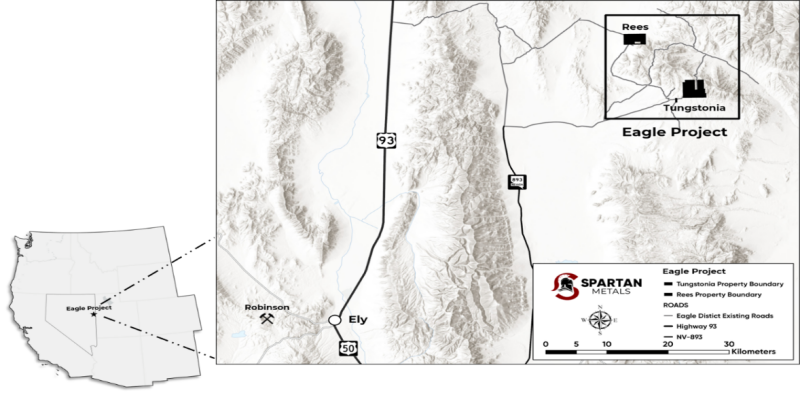
Click Image To View Full Size
Figure 2 Planned soil sampling locations at the Tungstonia Claims.

Click Image To View Full Size
Figure 3 Planned soil sampling locations at the Rees Claims
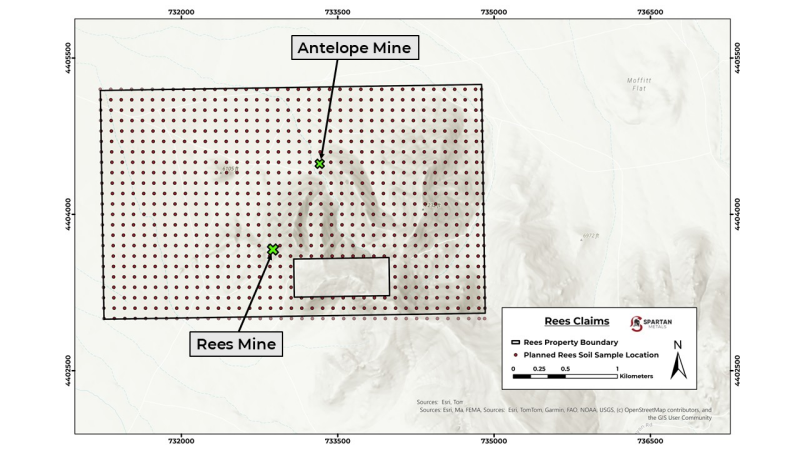
Click Image To View Full Size
Figure 4 Potential tungsten vein extensions and potential new veins in area of interest for geophysics. The assay information shown were previously reported on August 7, 2025.
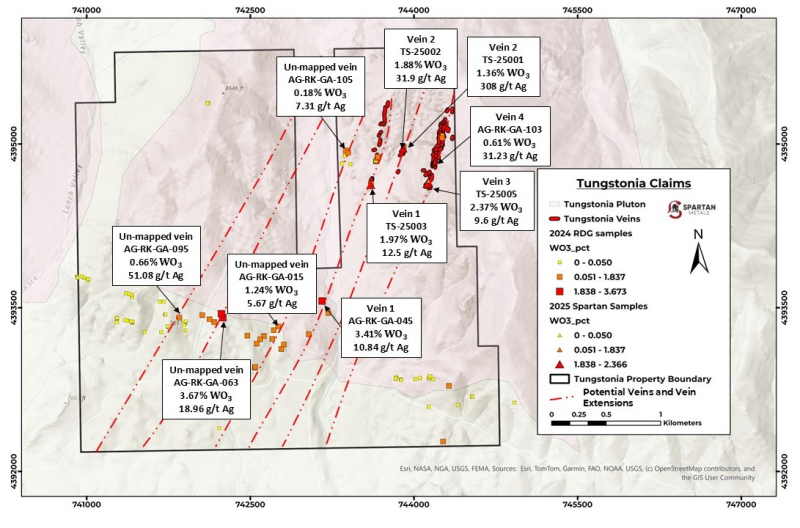
Click Image To View Full Size
About The Eagle Project
The Eagle Project (‘Project’) presents a unique opportunity to delineate one of the largest and highest-grade Tungsten and Rubidium districts in the United States. The Project consists of the past-producing high-grade Tungstonia (W) and Rees/Antelope tungsten (W-Cu-Ag) mines. Operations at these mines were from 1915 to 1942 with intermittent small-scale production occurring until 1956. Tungsten production from these two mines totaled 8,379 units at grades between 0.6%-0.9% WO 3 (1).
The Project is ~20 km² in size and located approximately 120 kilometers northeast of the town of Ely, in the Kern Mountains of White Pine County, Nevada. The Project covers 4,936 acres consisting of 244 Bureau of Land Management (BLM) unpatented lode mining claims.
Three deposit types are present at Eagle; Porphyry, Skarn, and Carbonate Replacement (CRD) that contain significant or anomalous grades of Tungsten (W), Silver (Ag), and Rubidium (Rb) plus Cu-Ag-Sb±Au-Pb-Zn-Bi-As across three project focus areas that includes the potential to recover W-Rb-Ag from the legacy Tungstonia Mill Tailings.
(1) Nevada Bureau of Mines and Geology (1988), Bulletin 105 p213-217
The technical information contained in this news release has been prepared under the supervision of, and approved by Brett R. Marsh, CPG. Mr. Marsh is President and CEO of Spartan Metals Corp and a ‘qualified person’ as defined under National Instrument 43-101 – Standards of Disclosure for Mineral Projects .
About Spartan Metals Corp.
Spartan Metals is focused on developing critical minerals projects in top-tier mining jurisdictions in the Western United States, with an emphasis on building a portfolio of diverse strategic defense minerals such as Tungsten, Rubidium, Antimony, Bismuth, and Arsenic.
Spartan’s flagship project is the Eagle Project in eastern Nevada that consists of the highest-grade historic tungsten resource in the USA (the past-producing Tungstonia Mine) along with significant under-defined resources consisting of: high-grade rubidium; antimony; bismuth; indium; as well as precious and base metals. More information about Spartan Metals can be found at www.SpartanMetals.com
On behalf of the Board of Spartan
‘Brett Marsh’
President, CEO & Director
Further Information:
Brett Marsh, M.Sc., MBA, CPG
President, CEO & Director
1-888-535-0325
info@spartanmetals.com
Neither the TSX Venture Exchange nor its Regulation Service Provider (as that term is defined in the policies of the TSX Venture Exchange) accepts responsibility for the adequacy or accuracy of this press release
Forward Looking Statements
This news release contains statements that constitute ‘forward-looking statements.’ Such forward looking statements involve known and unknown risks, uncertainties and other factors that may cause the Company’s actual results, performance or achievements, or developments in the industry to differ materially from the anticipated results, performance or achievements expressed or implied by such forward-looking statements. Forward-looking statements are statements that are not historical facts and are generally, but not always, identified by the words ‘expects,’ ‘plans,’ ‘anticipates,’ ‘believes,’ ‘intends,’ ‘estimates,’ ‘projects,’ ‘potential’ and similar expressions, or that events or conditions ‘will,’ ‘would,’ ‘may,’ ‘could’ or ‘should’ occur. Forward-Looking Information in this news release, Spartan has applied several material assumptions, including, but not limited to, assumptions that: the current objectives concerning the Company’s projects can be achieved and that its other corporate activities will proceed as expected; that general business and economic conditions will not change in a materially adverse manner; and that all requisite information will be available in a timely manner.
Although the Company believes the forward-looking information contained in this news release is reasonable based on information available on the date hereof, by their nature forward-looking statements involve known and unknown risks, uncertainties and other factors which may cause our actual results, performance or achievements, or other future events, to be materially different from any future results, performance or achievements expressed or implied by such forward-looking statements. By their nature, these statements involve a variety of assumptions, known and unknown risks and uncertainties and other factors, which may cause actual results, levels of activity and achievements to differ materially from those expressed or implied by such statements.
Examples of such assumptions, risks and uncertainties include, without limitation, assumptions, risks and uncertainties associated with general economic conditions; adverse industry events; future legislative and regulatory developments; the Company’s ability to access sufficient capital from internal and external sources, and/or inability to access sufficient capital on favorable terms; the ability of the Company to implement its business strategies; competition; the ability of the Company to obtain and retain all applicable regulatory and other approvals and other assumptions, risks and uncertainties.
THE FORWARD-LOOKING INFORMATION CONTAINED IN THIS NEWS RELEASE REPRESENTS THE EXPECTATIONS OF THE COMPANY AS OF THE DATE OF THIS NEWS RELEASE AND, ACCORDINGLY, IS SUBJECT TO CHANGE AFTER SUCH DATE. READERS SHOULD NOT PLACE UNDUE IMPORTANCE ON FORWARD-LOOKING INFORMATION AND SHOULD NOT RELY UPON THIS INFORMATION AS OF ANY OTHER DATE. WHILE THE COMPANY MAY ELECT TO, IT DOES NOT UNDERTAKE TO UPDATE THIS INFORMATION AT ANY PARTICULAR TIME EXCEPT AS REQUIRED IN ACCORDANCE WITH APPLICABLE LAWS.
Copyright (c) 2025 TheNewswire – All rights reserved.
News Provided by TheNewsWire via QuoteMedia